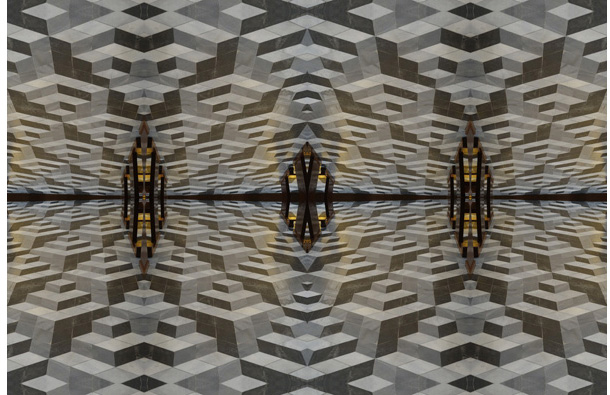The Falling Stone Paradox and its Consequence for the Block Model

A simple illustration shows that physical reality does not exist independently of an observer. If you drop a stone inside a moving train then the stone does not follow a unique path. The shape of the path it follows depends on the observer.
To the person who dropped the stone, it falls in a straight line vertically downwards. To a person standing outside the train the stone falls in a curved path. This is because the stone travels both horizontally and vertically with reference to the observer outside the train.
What is most interesting is that this does not rely on Einstein's Relativity Theory. All that is required is Newtonian mechanics, ie that an object continues with constant speed unless acted upon by a force.
Note that Special Relativity tells us that even time, length and simultaneity are not absolute but depend on one's frame of reference. Einstein's Relativity predicts a number of paradoxical results: length contraction, time dilation, relativistic mass, mass-energy equivalence, a universal speed limit, the speed of causality and relativity of simultaneity. It gives rise to the Twin Paradox, that a twin who goes into space and returns will be younger than the one who stayed home. However, except for mass-energy equivalence, these paradoxes are only perceptible at astronomical speeds, whereas the train paradox occurs at any speed.
NB Every prediction of Special Relativity has been confirmed and the theory is almost universally accepted. The last prediction of General Relativity, ie gravity waves, was confirmed in 2016. So Mr Einstein receives a 100% rating from posterity. Not bad for someone who has been dead for 75 years.
I used to think that the 4-dimensional block model was a valid way to view the universe. As HG Wells pointed out, one can look at the world as being a cube, each slice of which represents a moment in three dimensions, with the slice above being a moment hence. This can be visualised as a stack of papers or photographs, where each sheet is a moment. According to this view, there is no cause and effect. There is no movement of time, no change, since everything already is. There is no past, present or future, since all states of the universe are in the block. There is no movement in space either, since every position of each object is to be found in one of the slices. The only problem is that each sheet is actually three-dimensional, so that the stack is four-dimensional, with time being regarded like a 4th spatial dimension.
The consequence of the train paradox for the block model of the universe is that any block we select is arbitrary, being particular to a specific reference frame, one associated with some object or observer. When that object ceases to exist, the block associated with it also loses any validity. If the block model were unique then it could only show either a curved or a straight path for the falling stone. Since both paths are "correct", it follows that the block model cannot be unique. In fact, there must be infinitely many of them and they are all temporary, ie time-dependent.